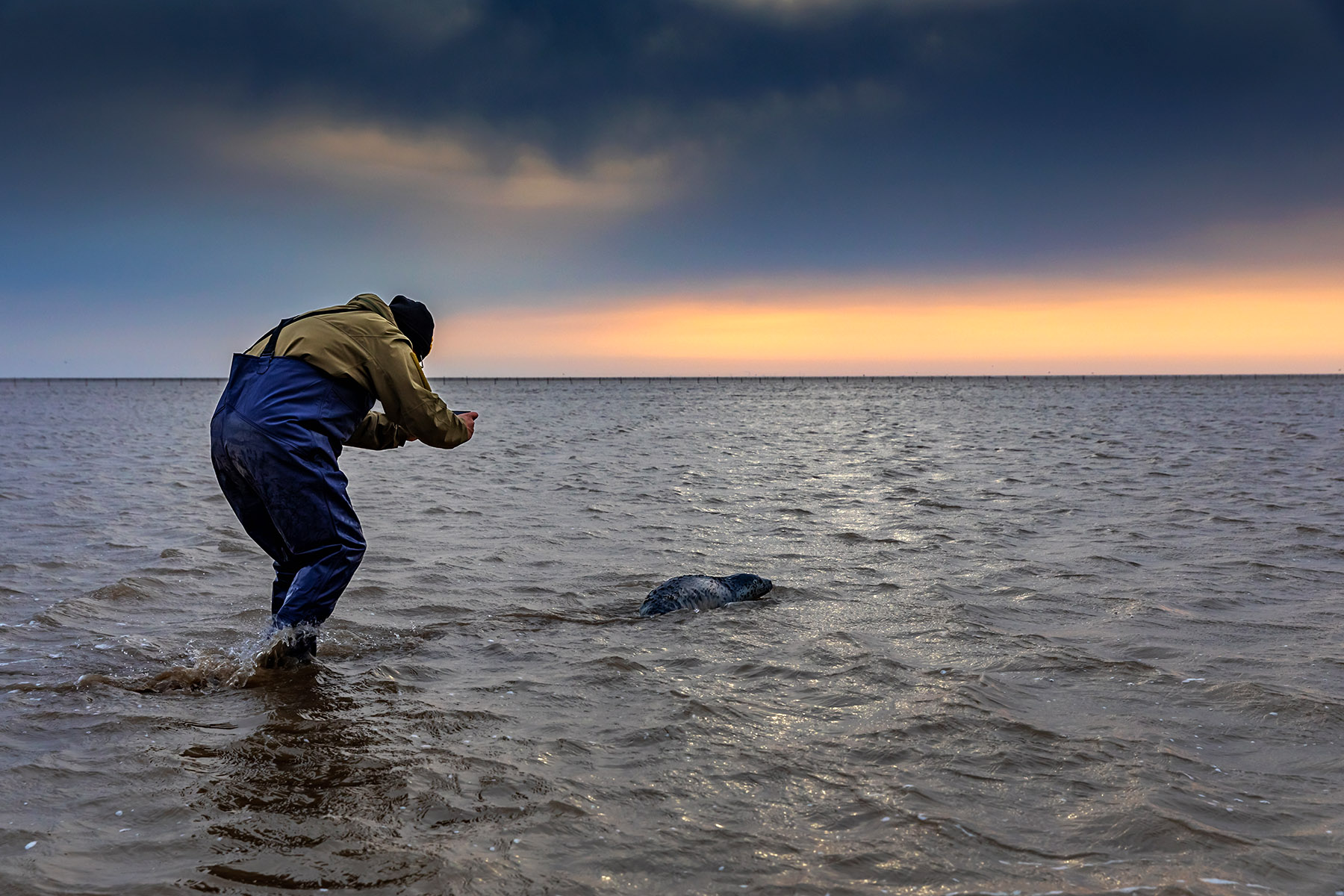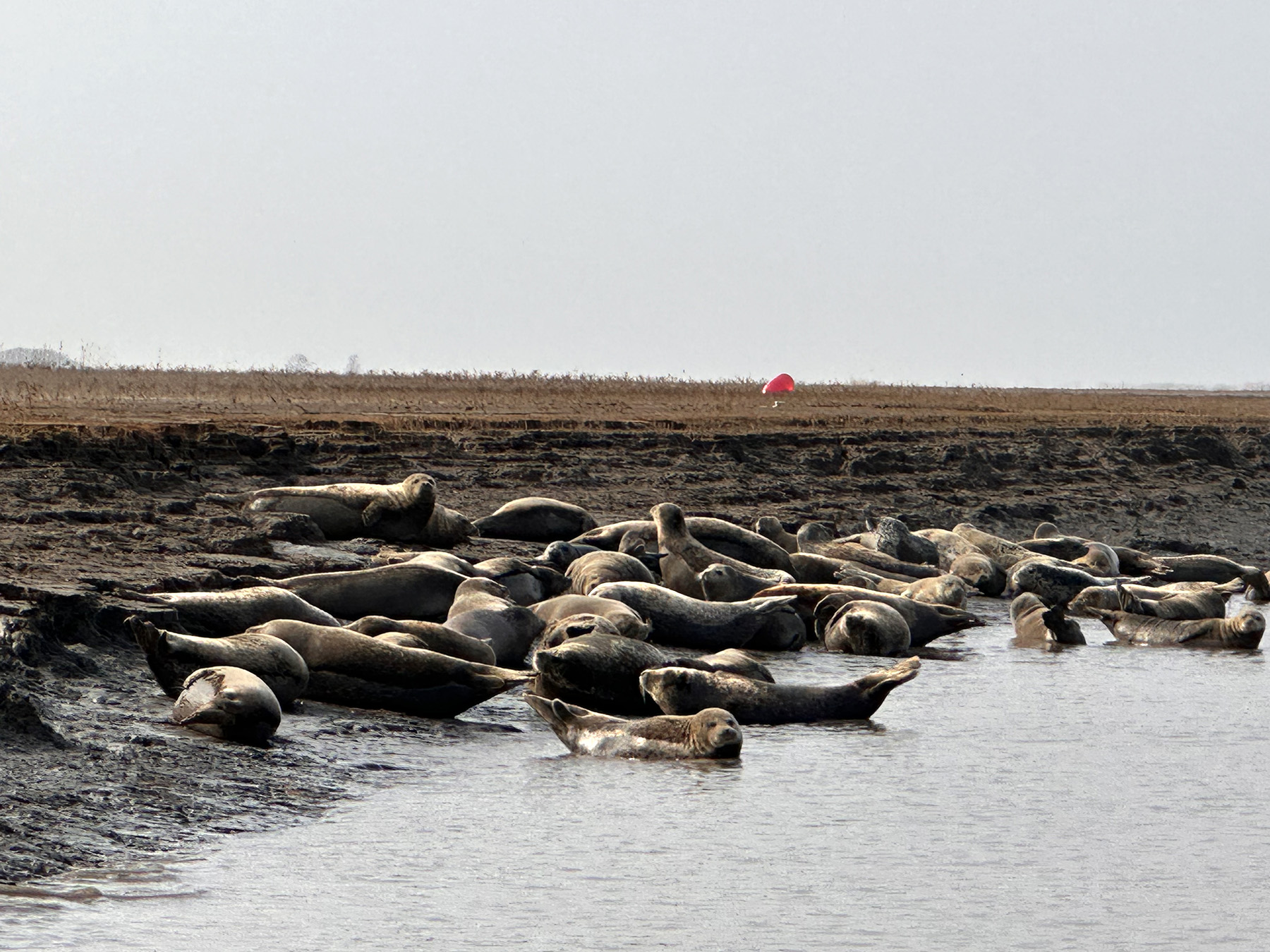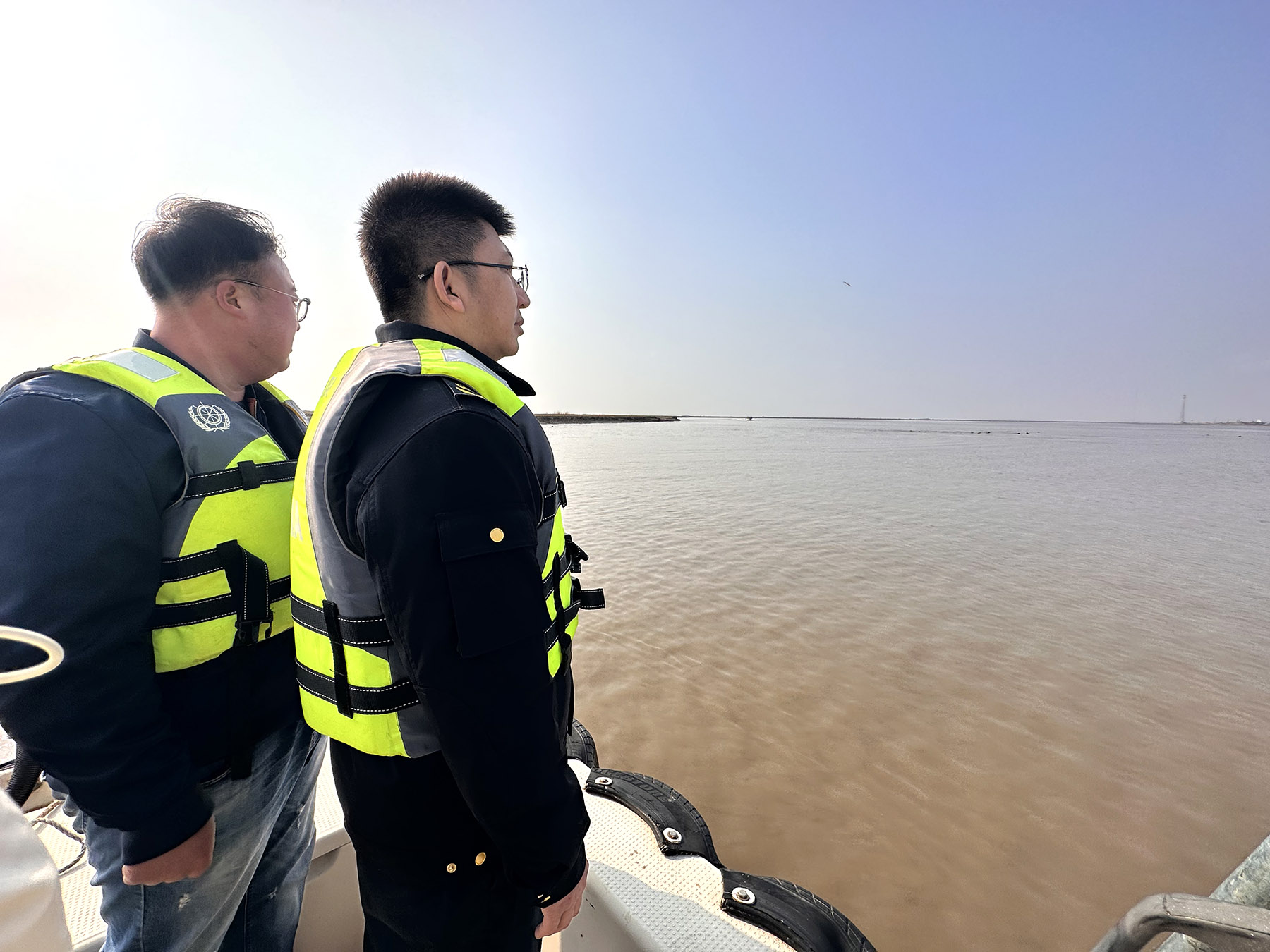This is the story of two men who have been rescuing and treating spotted seals in the Liaodong Bay area for years

All baby animals are cute. Seal pups are no exception.
One such pup, a spotted seal pup, about 20 days old, was found on an offshore oil extraction platform in Panjin, Liaoning province, by nearby residents in late February. Among those who rescued the cute, but initially angry and somewhat aggressive, pup was Li Yue, of the Fisheries Law Enforcement Command team, and volunteer Tian Jiguang.
"The seal pup was found with a fishing net entangled around its neck. Seals, even seal pups, have a strong temper. So when we approached it to remove the fishing net from its neck, it thought we would harm it and turned aggressive like an agitated dog. But the more it struggled, the more the net tightened around its neck. Eventually, it realized that we meant no harm, and allowed us to remove the net from around its neck," said Tian, founder of Panjin Wetland Protection Association.
READ MORE: 30% surge in spotted seal population observed in Liaoning Bay this year
Spotted seals' intelligence is roughly equivalent to that of a four-year-old child and even young seals can survive on their own in the wild, Tian said. But since the rescued pup was just about three weeks old and hence wouldn't have survived the harsh environment of the open sea without its mother, it was not released into the sea.
Spotted seals are relatively shy, difficult to approach and generally solitary, though they are gregarious and form large groups during pupping and molting seasons when they haul out on ice or on land when there is lack of ice, which nowadays is often the case. Perhaps that's why the pup was aggressive when approached, Tian said.
"We took care of it for a day, and then sent it to the Liaoning Ocean and Fisheries Science Research Institute in Dalian for treatment and examination. Only after we were sure the pup had developed the ability to survive in the wild was it returned to the sea," said Li, captain of the FLEC team in Panshan county, Panjin. Li generally rescues several spotted seals from the sea or shore every year.

Over the past decade, Li and his teammates have been patrolling the resting areas of spotted seals in the Liaodong Bay by boat. "There are five landing points that spotted seals favor in the bay area. The seals at different locations belong to different extended families," Li said.
He is familiar with every group of spotted seals in the Liaohe River Estuary National Nature Reserve in Panjin; he knows the heads of the families and those with scars that have been wintering in the bay area for years.
Spotted seals are mainly distributed in the Northwest Pacific region and are the only species of seals that breed in China, spending nearly half the year in the country.
Like migratory birds, they appear around October every year in the Liaodong Bay area, and embark on the long journey back to the Pacific in May after breeding. Although spotted seals have almost no natural enemies in the nature reserve, some are still injured or die every year, Li said.
The actual breeding period of spotted seals, however, is from January to mid-April, with the floating ice sheets on the sea being the natural maternity ward. Seal pups fatten up on protein- and fat-rich mother's milk on the floating ice for about a month before their white fur gradually sheds and they develop the strength to swim.
Newborn spotted seals are very fragile and have a poor sense of direction. Some may be hit by floating ice sheets or stranded on land after being carried away by tidal waves, leading to their death. That's why so many pups need to be rescued between January and March every year.
Li recalled an experience in early March 2009 when they found a young spotted seal, about 15 days old, with a back injury. Experts said that it must have been hit by a floating ice sheet two or three days after birth.
"When we found it, it was already on its last breath. At the time, our rescue and revival techniques were not so advanced, so we couldn't save it despite our best efforts," Li said with pain in his eyes.
Tian, who has been part of many rescue missions with Li, has made protecting spotted seals his career."Spotted seals arrived on this land before humans. Although they cannot speak, they have their own interests and needs. When the 'rights' of spotted seals are violated, I feel I should stand up and speak for them," Tian said.
To monitor and rescue seals, Tian moved into an abandoned white building in the wetland area in the nature reserve and set up the volunteer organization's office and exhibition area there.
"I have been helping protect spotted seals for 17 years and have rescued about 100 of them," he said.

Tian loves all creatures living in this area. For him, spotted seals are more like family. He even named a spotted seal with a scar on its belly Appendicitis. "I saw it for three consecutive years but haven't seen it this year," Tian said.
"It's April now and the spotted seals have started moving back to the Pacific again," he said.
The cycle will start again in October, when the spotted seals will "return home" to the northernmost coastline of China.
Over the years, researchers, environmentalists and wildlife experts have monitored and rescued spotted seals, as well as provided medical treatment for them.
Now, a complete system for rescuing spotted seals has been established, and both the protection and release of spotted seals in the wild have become more scientific, according to the Agricultural and Rural Affairs Bureau of Panshan county.
Spotted seals were included in the "National Key Protected Wild Animals List" in the late 1980s and became a first-class protected animal in 2021. More importantly, the authorities have taken targeted measures, including habitat restoration, to better protect the spotted seals, Tian said.
Panjin is famous for its unique red beaches and green reeds.
ALSO READ: Released seals adapt to wild in Bohai Sea
In fact, it boasts the world's largest and best-preserved coastal reed wetlands. Besides, in recent years, Panjin has restored 85,900 acres of coastal wetlands and added 17.6 kilometers of natural coastline by implementing the "returning farmland to wetlands" policy, thus creating a favorable breeding ground for Western Pacific spotted seals, according to the Linye River Wetland Conservation and Management Bureau of Panjin.
With the advancement of technology and better protection of the environment and ecology, the conservation efforts for spotted seals have yielded good results.
According to this year's population survey of spotted seals, nearly 400 individuals were observed in winter in the Liaohe reserve, that is, more than double the number in 2021 and 30 percent more than last year, according to the Linye bureau.
"I count the spotted seals one by one every day using high-definition images from drones. On March 25, we counted 398 spotted seals, the highest number we've seen this year," Tian said, adding that the spotted seals can sense the friendliness of the people here as well as the improvement in the ecological environment.
Yan Zhongqian contributed to this story.
Contact the writers at yandongjie@chinadaily.com.cn


